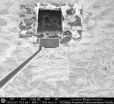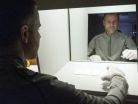(Press-News.org) What's one of your worst memories? How did it make you feel? According to psychologists, remembering the emotions felt during a negative personal experience, such as how sad you were or how embarrassed you felt, can lead to emotional distress, especially when you can't stop thinking about it.
When these negative memories creep up, thinking about the context of the memories, rather than how you felt, is a relatively easy and effective way to alleviate the negative effects of these memories, a new study suggests.
Researchers at the Beckman Institute at the University of Illinois, led by psychology professor Florin Dolcos of the Cognitive Neuroscience Group, studied the behavioral and neural mechanisms of focusing away from emotion during recollection of personal emotional memories, and found that thinking about the contextual elements of the memories significantly reduced their emotional impact.
"Sometimes we dwell on how sad, embarrassed, or hurt we felt during an event, and that makes us feel worse and worse. This is what happens in clinical depression—ruminating on the negative aspects of a memory," Dolcos said. "But we found that instead of thinking about your emotions during a negative memory, looking away from the worst emotions and thinking about the context, like a friend who was there, what the weather was like, or anything else non-emotional that was part of the memory, will rather effortlessly take your mind away from the unwanted emotions associated with that memory. Once you immerse yourself in other details, your mind will wander to something else entirely, and you won't be focused on the negative emotions as much."
This simple strategy, the study suggests, is a promising alternative to other emotion-regulation strategies, like suppression or reappraisal.
"Suppression is bottling up your emotions, trying to put them away in a box. This is a strategy that can be effective in the short term, but in the long run, it increases anxiety and depression," explains Sanda Dolcos, co-author on the study and postdoctoral research associate at the Beckman Institute and in the Department of Psychology.
"Another otherwise effective emotion regulation strategy, reappraisal, or looking at the situation differently to see the glass half full, can be cognitively demanding. The strategy of focusing on non-emotional contextual details of a memory, on the other hand, is as simple as shifting the focus in the mental movie of your memories and then letting your mind wander."
Not only does this strategy allow for effective short-term emotion regulation, but it has the possibility of lessening the severity of a negative memory with prolonged use.
In the study, participants were asked to share their most emotional negative and positive memories, such as the birth of a child, winning an award, or failing an exam, explained Sanda Dolcos. Several weeks later participants were given cues that would trigger their memories while their brains were being scanned using magnetic resonance imaging (MRI). Before each memory cue, the participants were asked to remember each event by focusing on either the emotion surrounding the event or the context. For example, if the cue triggered a memory of a close friend's funeral, thinking about the emotional context could consist of remembering your grief during the event. If you were asked to remember contextual elements, you might instead remember what outfit you wore or what you ate that day.
"Neurologically, we wanted to know what happened in the brain when people were using this simple emotion-regulation strategy to deal with negative memories or enhance the impact of positive memories," explained Ekaterina Denkova, first author of the report. "One thing we found is that when participants were focused on the context of the event, brain regions involved in basic emotion processing were working together with emotion control regions in order to, in the end, reduce the emotional impact of these memories."
Using this strategy promotes healthy functioning not only by reducing the negative impact of remembering unwanted memories, but also by increasing the positive impact of cherished memories, Florin Dolcos said.
In the future, the researchers hope to determine if this strategy is effective in lessening the severity of negative memories over the long term. They also hope to work with clinically depressed or anxious participants to see if this strategy is effective in alleviating these psychiatric conditions.
INFORMATION:
These results were published in Social Cognitive and Affective Neuroscience.
New study suggests a better way to deal with bad memories
2014-04-18
ELSE PRESS RELEASES FROM THIS DATE:
Impurity size affects performance of emerging superconductive material
2014-04-18
Research from North Carolina State University finds that impurities can hurt performance – or possibly provide benefits – in a key superconductive material that is expected to find use in a host of applications, including future particle colliders. The size of the impurities determines whether they help or hinder the material's performance.
At issue is a superconductive material called bismuth strontium calcium copper oxide (Bi2212). A superconductor is a material that can carry electricity without any loss – none of the energy is dissipated as heat, for example. Superconductive ...
Innovative strategy to facilitate organ repair
2014-04-18
This news release is available in French. A significant breakthrough could revolutionize surgical practice and regenerative medicine. A team led by Ludwik Leibler from the Laboratoire Matière Molle et Chimie (CNRS/ESPCI Paris Tech) and Didier Letourneur from the Laboratoire Recherche Vasculaire Translationnelle (INSERM/Universités Paris Diderot and Paris 13), has just demonstrated that the principle of adhesion by aqueous solutions of nanoparticles can be used in vivo to repair soft-tissue organs and tissues. This easy-to-use gluing method has been tested on rats. When ...
Under some LED bulbs whites aren't 'whiter than white'
2014-04-18
For years, companies have been adding whiteners to laundry detergent, paints, plastics, paper and fabrics to make whites look "whiter than white," but now, with a switch away from incandescent and fluorescent lighting, different degrees of whites may all look the same, according to experts in lighting.
"Retailers have long been concerned with the color-rendering qualities of their lighting, but less aware how light sources render white," said Kevin W. Houser, professor of architectural engineering, Penn State.
Not long ago, the only practical choices for home, office ...
Frozen in time: 3-million-year-old landscape still exists beneath the Greenland ice sheet
2014-04-18
Some of the landscape underlying the massive Greenland ice sheet may have been undisturbed for almost 3 million years, ever since the island became completely ice-covered, according to researchers funded by the National Science Foundation (NSF).
Basing their discovery on an analysis of the chemical composition of silts recovered from the bottom of an ice core more than 3,000 meters long, the researchers argue that the find suggests "pre-glacial landscapes can remain preserved for long periods under continental ice sheets."
In the time since the ice sheet formed "the ...
Impact glass stores biodata for millions of years
2014-04-18
PROVIDENCE, R.I. [Brown University] — Asteroid and comet impacts can cause widespread ecological havoc, killing off plants and animals on regional or even global scales. But new research from Brown University shows that impacts can also preserve the signatures of ancient life at the time of an impact.
A research team led by Brown geologist Pete Schultz has found fragments of leaves and preserved organic compounds lodged inside glass created by a several ancient impacts in Argentina. The material could provide a snapshot of environmental conditions at the time of those ...
'Dressed' laser aimed at clouds may be key to inducing rain, lightning
2014-04-18
The adage "Everyone complains about the weather but nobody does anything about it," may one day be obsolete if researchers at the University of Central Florida's College of Optics & Photonics and the University of Arizona further develop a new technique to aim a high-energy laser beam into clouds to make it rain or trigger lightning.
The solution? Surround the beam with a second beam to act as an energy reservoir, sustaining the central beam to greater distances than previously possible. The secondary "dress" beam refuels and helps prevent the dissipation of the high-intensity ...
First Earth-size planet is discovered in another star's habitable zone
2014-04-18
A team of astronomers that includes Penn State scientists has discovered the first Earth-size planet orbiting a star in the "habitable zone" -- the distance from a star where liquid water might pool on the surface of an orbiting planet. The discovery was made with NASA's Kepler Space Telescope. The discovery of this Earth-size planet, now named Kepler-186f, confirms -- for the first time -- that planets the size of Earth exist in the habitable zone of stars other than our Sun.
Some planets previously had been found in the habitable zone, but they all were at least 40 ...
Scientists discover brain's anti-distraction system
2014-04-18
Two Simon Fraser University psychologists have made a brain-related discovery that could revolutionize doctors' perception and treatment of attention-deficit disorders.
This discovery opens up the possibility that environmental and/or genetic factors may hinder or suppress a specific brain activity that the researchers have identified as helping us prevent distraction.
The Journal of Neuroscience has just published a paper about the discovery by John McDonald, an associate professor of psychology and his doctoral student John Gaspar, who made the discovery during his ...
New research shows people are thinking about their health early in the week
2014-04-18
San Diego, Calif. (April 18, 2014) ― A new study in the American Journal of Preventive Medicine analyzing weekly patterns in health-related Google searches reveals a recurring pattern that could be leveraged to improve public health strategies.
Investigators from San Diego State University, the Santa Fe Institute, Johns Hopkins University, and the Monday Campaigns, analyzed "healthy" Google searches (searches that included the term healthy and were indeed health-related, e.g., "healthy diet") originating in the U.S. from 2005 to 2012. They found that on average, ...
New clues on tissue scarring in scleroderma
2014-04-18
A discovery by Northwestern Medicine scientists could lead to potential new treatments for breaking the cycle of tissue scarring in people with scleroderma.
Fibrosis, or scarring, is a hallmark of the disease, and progressive tightening of the skin and lungs can lead to serious organ damage and, in some cases, death.
The concept for new therapeutic options centers on findings made by Swati Bhattacharyya, PhD, research assistant professor in Medicine-Rheumatology, who identified the role that a specific protein plays in promoting fibrosis.
"Our results show how a ...







